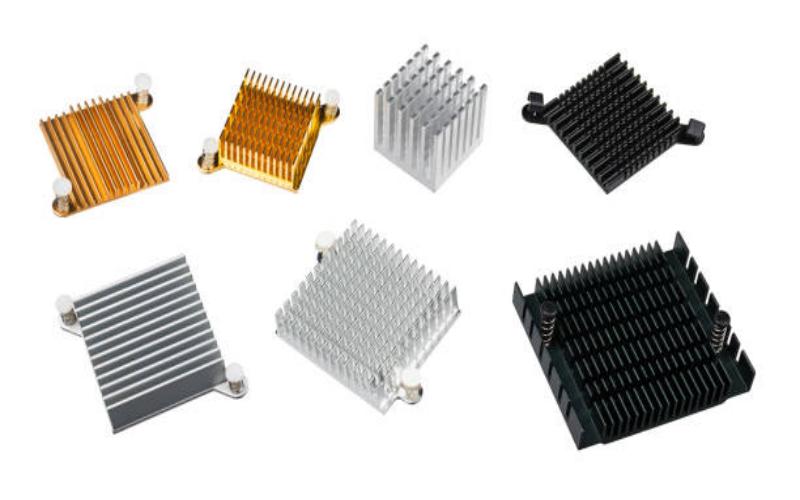How to pick a Server Cooling Solution?
When it comes to running a successful server room, one of the most critical factors to consider is the cooling solution. Without proper cooling, servers can overheat, leading to decreased performance, downtime, and even permanent damage. In this article, we will explore the key aspects to consider when picking a server cooling solution that will ensure optimal performance and longevity for your servers.
1. Understanding the Importance of Server Cooling
Before diving into the specifics of choosing a server cooling solution, it's essential to understand why it is so crucial. Servers generate a significant amount of heat while operating, and if this heat is not effectively managed, it can lead to a variety of issues. These include decreased performance, increased energy consumption, and even premature hardware failure. Therefore, investing in an efficient server cooling solution is vital to maintain the stability and reliability of your server room.
2. Assessing the Cooling Requirements
The first step in selecting a server cooling solution is to assess your specific cooling requirements. Factors such as the number of servers, power density, and the size of the server room will influence the type and capacity of the cooling system you need. Conduct a thorough evaluation of your current and future cooling needs to ensure you choose a solution that can adequately handle the heat load and maintain an optimal operating temperature.
3. Types of Server Cooling Solutions
There are various types of server cooling solutions available in the market, each with its own advantages and disadvantages. The most common types include air conditioning units, liquid cooling systems, and containment solutions. Air conditioning units use refrigerants to cool the air circulating in the server room, while liquid cooling systems use water or other coolants to remove heat directly from the servers. Containment solutions involve isolating hot and cold air streams to improve cooling efficiency. Consider the pros and cons of each type to determine which one best suits your server room requirements.
4. Energy Efficiency and Cost
Energy efficiency is a critical aspect to consider when picking a server cooling solution. Cooling systems can consume a significant amount of electricity, so opting for an energy-efficient solution can help reduce your energy bills and contribute to a greener environment. Look for cooling solutions with high energy efficiency ratings and certifications. However, it's important to strike a balance between energy efficiency and cost, as more efficient systems may come with a higher upfront investment.
5. Scalability and Future Expansion
As your business grows, your server room requirements may also expand. Therefore, it is crucial to choose a cooling solution that is scalable and can accommodate future growth. Consider the cooling solution's capacity, flexibility, and compatibility with your existing infrastructure. Investing in a scalable solution will save you the hassle and cost of having to replace the cooling system when your server room expands or undergoes upgrades.
6. Noise Levels and Environmental Considerations
Noise levels can be a concern in server rooms, especially if they are located in close proximity to office spaces or other areas where noise can be disruptive. Some cooling solutions, such as air conditioning units, can generate significant noise. Ensure that the cooling solution you choose operates at an acceptable noise level for your environment. Additionally, consider any environmental regulations or restrictions that may apply to your location, such as noise or refrigerant usage limitations.
7. Maintenance and Reliability
Regular maintenance is crucial to keep your cooling system in optimal condition and prevent unexpected failures. Consider the maintenance requirements of the cooling solution you are considering, including filter replacements, cleaning procedures, and any specialized maintenance tasks. Additionally, look for cooling solutions from reputable manufacturers known for their reliability and durability. Investing in a reliable cooling solution will minimize the risk of downtime and costly repairs.
8. Integration with Monitoring and Management Systems
An effective server cooling solution should integrate seamlessly with your existing monitoring and management systems. This integration allows you to closely monitor the cooling system's performance, receive alerts in case of any issues, and make informed decisions regarding cooling adjustments. Compatibility with industry-standard monitoring and management tools ensures a comprehensive and centralized approach to server room management.
9. Professional Installation and Support
Proper installation and ongoing support are essential for the optimal functioning of your server cooling solution. Engage with experienced professionals who have expertise in server cooling installations to ensure that the system is installed correctly and according to industry best practices. Additionally, select a cooling solution that comes with reliable technical support and warranty coverage to address any potential issues that may arise during operation.
10. User Reviews and Recommendations
Finally, take advantage of user reviews and recommendations when selecting a server cooling solution. Research online and consult with industry professionals to gather insights into the performance, reliability, and overall satisfaction of users with different cooling solutions. Real-world experiences can provide valuable information that will help you make an informed decision and select the best cooling solution for your server room.

